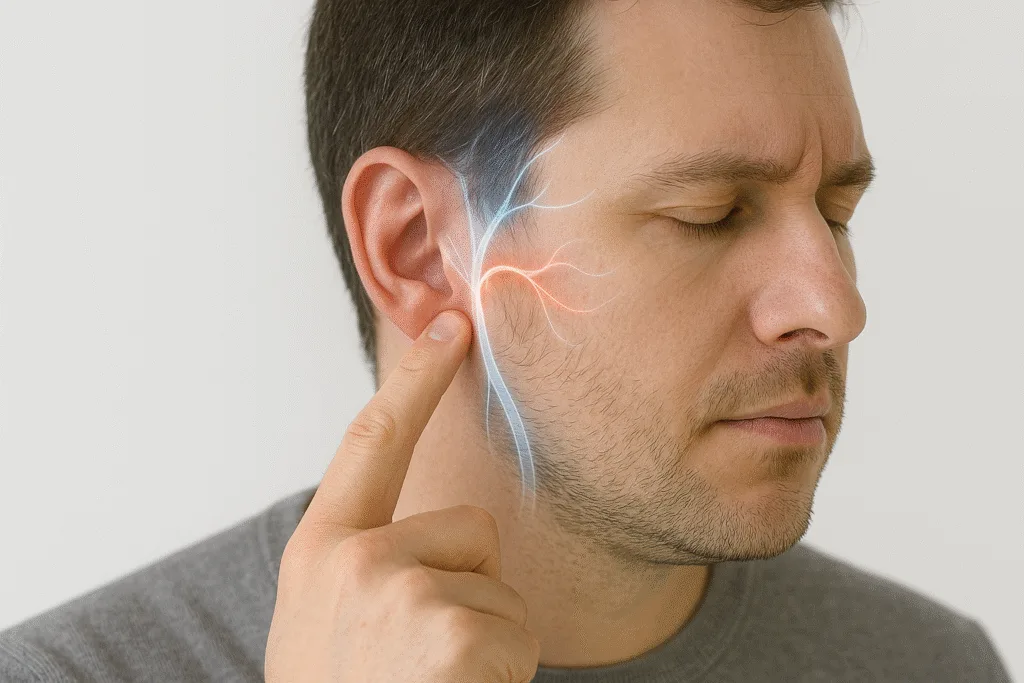You don’t need a stethoscope, smartwatch, or medical device to hear your heartbeat.
Your own body can reveal your pulse in a surprisingly clear way — and all you need is one finger and 30 seconds.
This experiment demonstrates how your ear canal, blood flow, and nervous system work together to amplify internal sound.
Prepare to hear your pulse louder than you ever have before.
Let’s begin.
Step 1 — Place Your Finger at the Entrance of Your Ear
Take your index finger and gently press it against the entrance of your ear canal.
Not deep.
Just enough to close the opening.
Stay still for 3–5 seconds.
What you should notice
A soft, rhythmic thump-thump begins to appear.
That sound is your heartbeat.
You’re hearing your pulse through your finger thanks to internal sound amplification inside your ear.
Step 2 — Understand Why This Trick Works So Well
Your ear canal acts like a natural amplifier when closed.
This is called the occlusion effect.
Why it amplifies your heartbeat
- Low-frequency sounds get louder when the ear is sealed
- Blood flow vibrations travel through tissue and bone
- The finger acts as a soft “cap,” boosting internal resonance
- Your head becomes a miniature echo chamber
This combination creates a perfect condition to hear your pulse clearly and instantly.
This is how you’re able to hear your pulse through your finger with no equipment at all.
Step 3 — Listen for Rhythm, Volume and Pattern
Stay still and keep your finger sealing the canal.
Now pay close attention to:
1. Volume
A louder pulse may mean:
- increased blood flow
- stress
- caffeine
- recent physical activity
2. Pattern
A steady rhythm reflects calm and balance.
A slightly irregular pattern can indicate fatigue, excitement, or breathing changes.
3. Side differences
Most people hear their pulse louder in one ear than the other.
This reflects natural circulation variations.

Step 4 — Change Your Pulse in Real Time
Now the experiment gets interesting.
Try these and listen to how the sound changes:
1. Slow deep breath
Inhale 5s → exhale 5s
Your pulse softens.
2. Fast breathing
5 quick breaths
Your pulse sharpens and speeds up.
3. Squeeze your fist
Lightly tighten your fist for 5 seconds.
Your pulse gets stronger.
Why this happens
Your heart rate responds instantly to:
- oxygen changes
- muscle tension
- stress
- breathing patterns
Hearing these shifts helps you measure your internal state in real time.
Step 5 — Test the Sensitivity of Your Nerves and Arteries
Try lifting your finger for one second and resealing the ear.
Did you notice how the pulse vanishes then returns louder?
This shows how responsive your nerves are and how your ear canal behaves acoustically.
Extra mini-test
Tap your finger lightly while sealing the canal —
listen to how even tiny movements sound amplified.
Your ear is incredibly sensitive to vibration.
Step 6 — Where Exactly the Sound Comes From
Many people think the sound they hear is the heartbeat itself —
but that’s not exactly true.
What you’re really hearing
You’re detecting:
- blood being pushed upward from the heart
- arterial pressure waves around the ear
- vibration of soft tissues near the skull
- internal resonance inside the sealed ear canal
This combination creates the characteristic “pulse sound” you’re hearing.
Your pulse is always there — closing the ear simply gives you access to it.
Step 7 — What This Experiment Reveals About Your Body
This simple test provides unexpected insights about your biology:
1. Circulation speed
A clear, fast sound = high circulation activity.
A softer, slower sound = calm cardiovascular state.
2. Stress levels
Stress tightens muscles, raises pulse and increases volume.
3. Nervous system sensitivity
If you hear your pulse instantly, your sensory system is highly responsive.
4. Breathing influence
Your pulse changes with each breathing cycle — especially if you pay attention.
5. Awareness level
This experiment strengthens internal perception (interoception).
You learned to hear your pulse through your finger — something your body always allowed, but your brain never noticed.
Step 8 — Compare Both Ears (Fascinating Result)
Now repeat the experiment on the other ear.
You’ll likely notice one of these:
- one ear is louder
- one ear has a sharper rhythm
- one ear takes longer to “activate”
- one ear sounds deeper
Why?
Each side of your head has slightly different:
- artery pathways
- nerve sensitivity
- tissue thickness
This variation is perfectly normal — and fascinating to detect.
Step 9 — Try Hearing Your Pulse Without Touching
Now that you’ve heard your pulse amplified:
- Remove your finger
- Sit still
- Stay completely silent
- Listen inside your head
Many people notice they can still detect:
- faint thumps
- soft internal echoes
- low-frequency vibrations
This is your mind learning how to listen without external help.
Try the Next 30-Second Experiment
The One-Eye Focus Test — How Sharp Is Your Vision in 30 Seconds?
Another fast, revealing experiment you can try right now.
